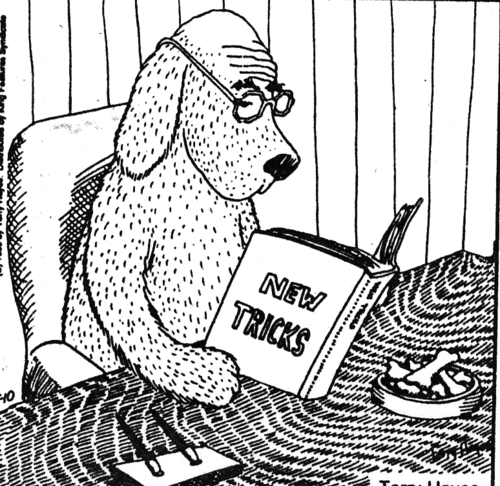
It wasn’t that long ago that a computer was considered ‘past it’ by its 5th birthday.
I myself often used to say that computers age like dogs but in light of recent trends I think perhaps I ought to amend this to computers age like small dogs.
It’s not uncommon for us to upgrade a Mac that is ten or more years old and I think there are a few factors that contribute to this.
Firstly, the quality of the hardware – Apple have nearly always produced well built and quality computers. Recent hard drives not withstanding.
Secondly Apple continue to upgrade and patch operating systems three years or more after they have been superseded. Indeed it is often internet services that force people to upgrade long after Apple have waved goodbye.
And finally, even with an operating system that hasn’t seen a security patch since Keating was Prime Minister there is little chance of infection or ransomware taking hold.
But that said, after three years or so your Mac will not receive security patches and if that means anything to you and your sense of wellbeing it is worth noting that 10.13 – High Sierra – is about to get the chop.
So I guess the first question is… is this relevant to you? To find out click on your Apple menu (far top left hand corner of the screen) and select About this Mac.
If you are running 10.13 or less then yes, this article is for you. If it says Windows 10… you are reading the wrong website and you’ve managed to find an Apple menu on your Windows PC, so well done.
So even if you are running 10.13 or less, this doesn’t necessarily mean you need a new Mac… it just could be you haven’t applied any updates in a while.
Amongst the info you found in About this Mac, you’ll also see what kind of computer you are running (iMac, late 2012, ect)
Depending on what that says will depend on whether your fix will costs hundreds or thousands.
The next operating system up from High Sierra is Mojave 10.14 and upgrading to at least this will give you another 12 months of support. To see if you qualify have a look at this handy chart below.
- MacBook (Early 2015 or newer)
- MacBook Air (Mid 2012 or newer)
- MacBook Pro (Mid 2012 or newer)
- Mac mini (Late 2012 or newer)
- iMac (Late 2012 or newer)
- iMac Pro (2017)
- Mac Pro (Late 2010 or newer)
However, if your Mac is 2010 or older then sadly your only option is a new Mac.
Right about now I bet your are wondering… what are the pros and cons of each? I am glad you wondered!
Obviously upgrading just the software is going to be cheaper, even after you factor in the labour cost and the replacement of older software titles, it won’t come near the cost of a new Mac.
A new Mac on the other hand, probably including all of the issues of new software and labour, gives you phenomenal speed over whatever you are using now.
Should you want help upgrading when take your Mac and apply any of the updates available to keep you current and patched.
On the other hand, if a new Mac is on the agenda (please read this first) then we can transfer the data to your new Mac and take care of any issues that may arise.
In a nutshell – if you want to remain patched – you need to do something if you are running 10.13 or less… it is just a question of upgrading or replacing.

2 comments
Renny
I have an iMac mid 2010 running High Sierra 10.13.6 – as I read it I can do software upgrades – is that right?
Doug
Macbook Pro 13 inch mid 2011, is on OS High Sierra 10.13.6
What should I do about this?